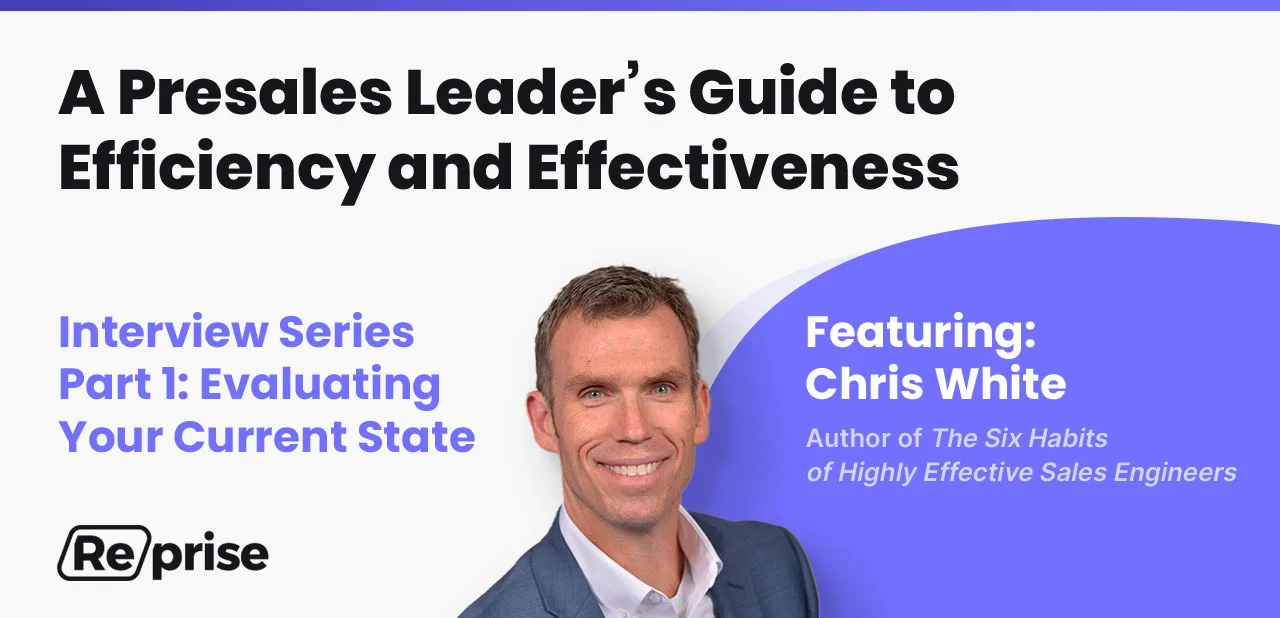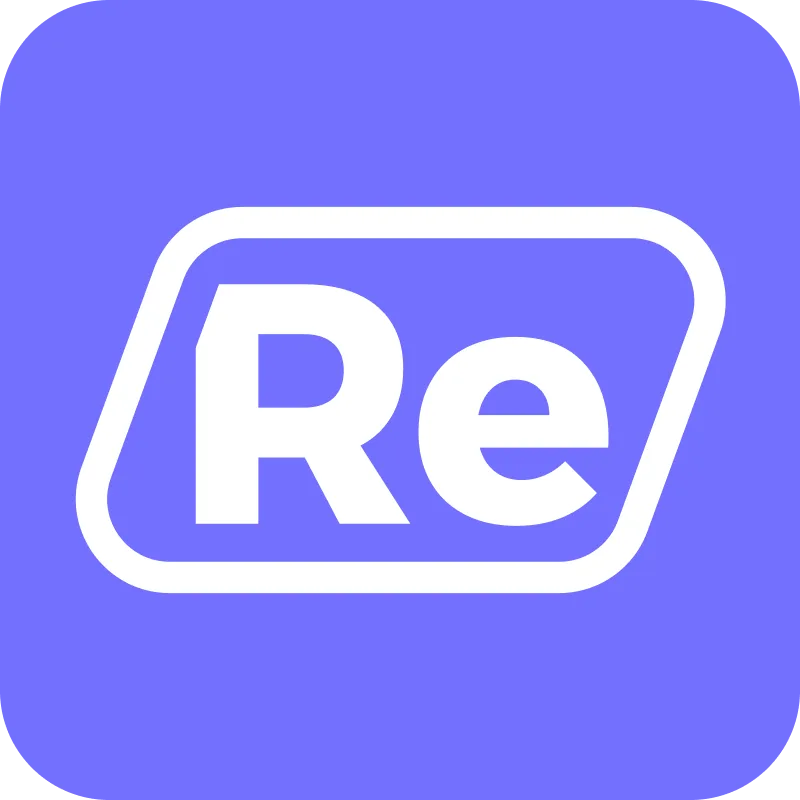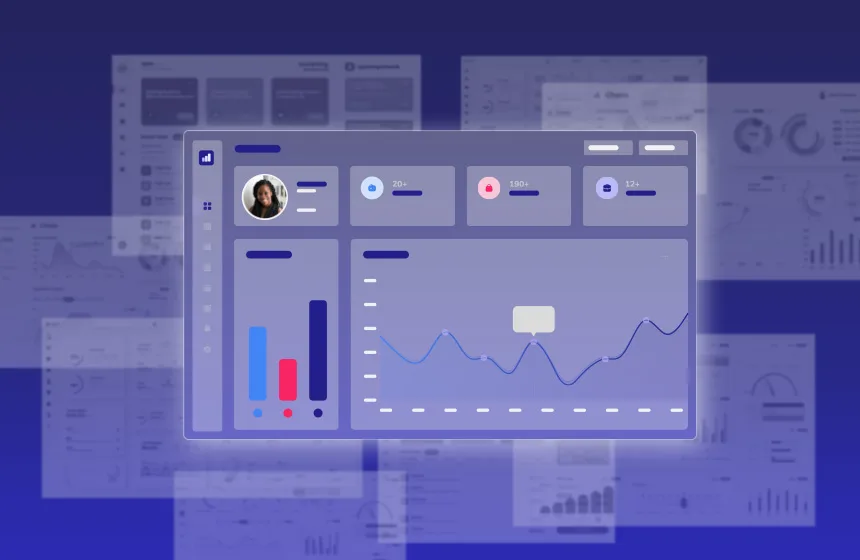Accelerate deals and increase win rates with the leading enterprise AI demo platform.
A Presales Leader’s Guide Part 1: Evaluating Your Presales Team

April 17, 2025
Table of Contents
Part 1: Evaluating your current state
As a presales leader, how do you guide your team to achieve their goals, without wasting time or resources? That’s the big question we’re answering in this interview series with Chris White, the founder of TechSalesAdvisors and author of The Six Habits of Highly Effective Sales Engineers. With a more than 30-year career in technical sales and consulting, he’s worked with thousands of sales engineers (SEs), and built a successful framework for delivering winning sales demos.
We start off with a conversation about how presales leaders can evaluate the current state of their team’s efficiency and effectiveness.
Reprise: What are some of the big things presales leaders should think about when it comes to planning for the quarter or year?
Chris: One of the most important things for presales leaders to think about is objective-setting. What are the goals you want your team to achieve? Understand the goals or outcomes you want to measure. Without a benchmark, you don’t know how effective you’re going to be.
For example, do you want to improve communication and collaboration with your sales counterparts? Improve opportunity responsiveness? Prioritize professional development? Attain quota or drive revenue? Improve the overall customer experience?
All of these are great objectives to consider, but keep in mind that there’s only so much time in a day. Prioritizing is key. For example, for one of my clients, an important part of supporting sales in hitting their numbers was contributing to a consumption-based revenue model. Instead of prioritizing new signups alone, this team knew they needed to focus on coaching prospects and current customers to increase their usage of the product. Think about similar goals your organization might have, and map your presales objectives back to those.
Reprise: What is the best way to evaluate how your presales team is spending their time?
Chris: Here’s one good assessment: Think about the percentage of time you’re spending on customer-facing meetings vs. non-customer-facing meetings. If that percentage is tipped heavily toward non-customer-facing meetings, it’s time to take a hard look at your internal team’s processes.
Another good thing to think about is how much context your presales team is getting before customer-facing meetings. Is the sales team giving enough time to prepare for these meetings, or are SEs just showing up without knowing what they are getting into? Think about the best uses of internal collaboration time that would lead to a successful outcome with the prospect.
Reprise: What are some red flags that can show presales leaders that they need better internal collaboration with sales?
Chris: I like to look at the SE’s level of proactivity. How proactive are they in making sure they have the information they need, and are prepared for meetings? Getting involved too late in the sales cycle can be a red flag.
Another issue can arise if the SE is not effectively negotiating with the AE for what they need, or pushing back critically when things aren’t working. Not taking ownership for your own success is taking the easy way out. Leaders need to coach these team members to identify what they can do to influence the situation, instead of playing the role of victim.
It’s important for SEs to be more proactive about communicating with AEs. In a perfect world, they would have established rules of engagement before they start taking on prospect meetings. That means setting expectations around the discovery process, the amount of time needed to prepare for demos, following up after meetings, and more.
With that said, SEs need to remember to be flexible in their approach. Trust, respect, and communication must be established in both directions. Both AEs and SEs need to appreciate the difficulty of one another’s jobs. Effective communication requires being proactive, direct, and ensuring that both parties are on the same page.
Reprise: How do you identify skills gaps in your team that require training or enablement?
Chris: It all begins with this question, “Are we closing winnable deals?” If the answer to that question is “no,” there may be a fixable problem with one of the steps that SE is responsible for, for example, the demo. Are you getting to the demo but failing to move forward and get to a close? Are you failing to move to a POC? Are your demos too focused on the technology, or are they irrelevant to the buyer?
There are two goals of any demo. First, you want prospects to understand what they’re seeing and how the solution will solve their problems, or help them achieve their goals. Second, you want them to be impressed and convinced that yours is the best solution for them. If neither of these goals are achieved, there is a problem with the demo or the skillset of the person giving the demo. When they engage in technical discovery, are they uncovering the information necessary to present the solution in a meaningful way? Based on discovery, are they able to effectively position the problem and determine what should be demoing? Do they need to establish a better collaboration with sales?
Reprise: How do you know when a lack of productivity is getting in the way of success?
Chris: Is your SE closing deals but taking a week to prep for every demo? If they’re not producing to the level that the team requires, there may be a problem with their approach to demos. They’re either focused on the wrong things or there’s a problem with their demo environment.
SaaS is not designed to be demonstrated; it’s designed to be used. As a result, it can be cumbersome and laborious to configure a SaaS product to be in a state where it can be effectively demonstrated.
That’s why the category of demo automation has exploded the way it has. It’s difficult to change the necessary elements for every bespoke demo (e.g. customer data, the product’s look and feel, and more). A demo creation platform can help the presales team effectively scale their resources. For example, if presales can create a demo library that sales reps can effectively edit and run with on their own, they can spend more time on strategic tasks, instead of wasting time configuring the demo environment.
***
That’s a wrap for part one of our interview series with Chris White. In part two, we’ll take what we’ve learned about evaluating the current state of your presales organization and apply it toward developing a strategy for achieving your goals. We’ll use a presales enablement framework Chris has developed in consulting with hundreds of enterprise sales organizations. We’ll then wrap up part three by talking about measuring success, featuring success stories from top-performing presales teams.
Want more presales leadership tips? Check out our on-demand webinar with Chris White:







